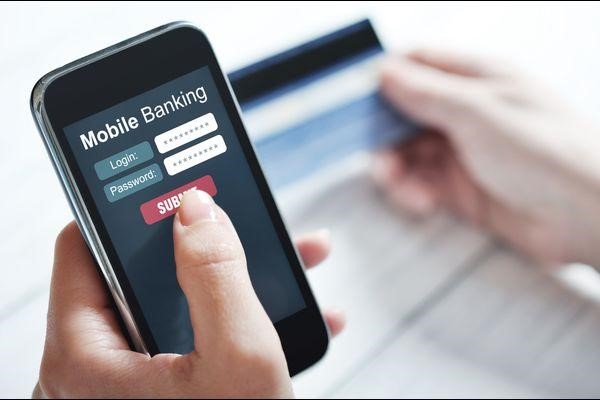In an era where smartphones rarely leave our hands, it’s no surprise that mobile banking has swiftly become a cornerstone of financial management for the modern generation. What was once the domain of in-person visits to brick-and-mortar banks or slow interactions through desktop websites has evolved into a seamless, real-time digital experience. Today, mobile banking is not just a convenience—it’s a lifestyle, a movement, and a transformative force reshaping how individuals, especially millennials and Gen Z, interact with their money.
As financial technology continues to advance at breakneck speed, the widespread adoption of mobile banking apps has created an entirely new way to save, spend, invest, and plan for the future. This digital evolution has not only changed the expectations consumers have for their financial institutions, but it has also rewritten the rules of engagement in the financial sector. Whether it’s through biometric authentication, AI-powered budgeting tools, or instant peer-to-peer transfers, mobile banking is now leading the charge in the ongoing digital revolution of personal finance.
The Rise of Mobile Banking: A Cultural and Technological Shift
The concept of managing finances through a mobile device may have seemed futuristic a decade ago, but today it is a standard part of daily life for millions. The proliferation of smartphones laid the foundation, but it was the explosion of financial apps and digital banking platforms that truly ignited the revolution.
Traditional banks were initially slow to adapt to mobile-first expectations. However, as tech-savvy startups and neobanks began offering sleek, user-friendly apps with zero fees and innovative features, the established financial giants were forced to pivot. What followed was a massive investment in digital transformation across the industry, with mobile banking apps becoming the centerpiece of this modernization effort.
For consumers, the transition to mobile banking has been largely positive. With just a few taps, users can now check balances, pay bills, transfer money, and even apply for loans—all without stepping foot in a bank branch. This level of convenience and control has made financial management more accessible than ever before, particularly for younger demographics who are digital natives and value speed and efficiency above all else.
Why Mobile Banking Appeals to the New Generation
This generation of consumers—those who have grown up with smartphones, apps, and social media—demands convenience, personalization, and instant gratification. Mobile banking delivers on all fronts. From personalized spending insights to automated savings tools, the mobile-first financial experience is tailored to meet the unique needs of today’s users.
Moreover, mobile banking apps offer a level of transparency and empowerment that traditional banking methods often lacked. Users can receive real-time notifications about account activity, helping them stay on top of their finances and avoid overdraft fees. Features like digital budgeting tools, goal tracking, and investment dashboards make it easier for individuals to take control of their financial health.
Additionally, the visual interface of mobile banking apps simplifies complex financial data. Instead of parsing through paper statements or dense spreadsheets, users can view graphs, charts, and infographics that make financial analysis more intuitive and engaging. This visual appeal plays a major role in drawing in and retaining users who are used to interactive, design-forward apps in other areas of life.
The Security Evolution of Mobile Banking
One of the biggest concerns in the early days of mobile banking was security. Understandably, users were hesitant to trust their smartphones with sensitive financial data. But mobile banking platforms have made tremendous strides in this area, implementing advanced security measures that rival (and often exceed) those of traditional banking methods.
Biometric logins such as fingerprint scanning and facial recognition have become standard in many mobile banking apps, reducing the risk of unauthorized access. Multi-factor authentication (MFA) adds an extra layer of protection, while end-to-end encryption ensures that data remains secure from end to end.
Banks and financial institutions also employ real-time fraud detection systems that monitor transactions for suspicious activity. If anything unusual is detected, users are immediately alerted through push notifications or text messages. This immediate feedback loop allows for faster response times and greater user confidence.
For many users, the enhanced security features of mobile banking have actually increased their sense of control and peace of mind, further accelerating adoption rates. In fact, many now see mobile banking as safer than carrying physical debit or credit cards, which can be lost or stolen.
Financial Inclusion Through Mobile Platforms

Another significant benefit of mobile banking is its potential to promote financial inclusion. Across the globe, millions of people remain unbanked or underbanked due to geographic, economic, or social barriers. Mobile banking has emerged as a powerful tool for bridging this gap.
With just a smartphone and internet access, individuals can now open bank accounts, receive direct deposits, and access credit—capabilities that were once out of reach for many. This accessibility is particularly transformative in developing countries, where traditional banking infrastructure may be limited or nonexistent.
Even in developed nations, mobile banking provides a lifeline to those who face mobility challenges or live in rural areas without easy access to physical branches. The ability to conduct all necessary banking functions from the comfort of one’s home can be life-changing for seniors, people with disabilities, and others who benefit from remote services.
By removing barriers to entry and offering intuitive, multilingual interfaces, mobile banking apps are bringing more people into the formal financial system, empowering them with tools to build credit, save money, and achieve greater financial stability.
Mobile Banking’s Role in the Rise of Fintech and Neobanks
The success of mobile banking is closely tied to the rise of the broader fintech ecosystem. Fintech companies have disrupted the financial landscape by introducing innovative solutions that prioritize user experience, speed, and transparency. Many of these companies operate exclusively through mobile platforms, making them lean, agile, and well-suited to meet modern demands.
Neobanks—digital-only banks without physical branches—are at the forefront of this movement. These banks often offer zero-fee accounts, instant transfers, high-yield savings options, and cryptocurrency integration, all through sleek mobile interfaces. Without the overhead costs associated with traditional banking, neobanks are able to pass savings on to consumers while focusing intensely on digital innovation.
The competition between traditional banks and neobanks has sparked a wave of innovation across the board. Established institutions have invested heavily in upgrading their mobile banking capabilities, integrating AI-powered chatbots, personalized financial advice, and even gamified saving experiences to remain relevant.
How Mobile Banking is Changing Spending and Saving Habits
Perhaps one of the most intriguing impacts of mobile banking is the way it has altered consumer behavior. With constant access to financial data, users are becoming more aware of their spending habits and more proactive about saving. Mobile apps provide real-time insights, categorize expenses, and offer visual breakdowns of where money is going.
This constant visibility encourages better decision-making. For example, a user might be more likely to cut back on impulse spending after receiving a weekly spending report from their app. Similarly, round-up savings features—where spare change from purchases is automatically transferred into savings—make it easy for users to build a financial cushion without even thinking about it.
Some apps go further, offering “smart saving” features that analyze income and expenses to suggest optimal times and amounts to transfer to savings or investments. These tools remove friction from the savings process, making it easier than ever to develop healthy financial habits.
The Role of Artificial Intelligence in Mobile Banking
Artificial intelligence is playing an increasingly important role in the evolution of mobile banking. From fraud detection to customer service, AI is enhancing efficiency and personalization at every turn.
AI-powered chatbots now handle a wide range of customer service inquiries, allowing users to get answers 24/7 without waiting on hold. These virtual assistants can help users reset passwords, report lost cards, or even offer financial tips based on transaction history.
More advanced AI systems analyze spending patterns to provide customized advice, such as alerting users when they’re close to exceeding their monthly budget or recommending better interest rates. As AI becomes more sophisticated, mobile banking apps are expected to offer even deeper insights and more predictive financial planning tools.
Mobile Payments and the Future of Cashless Transactions
Another significant trend accelerated by mobile banking is the shift toward a cashless society. Mobile wallets, peer-to-peer payment platforms, and contactless payments are quickly becoming the norm. Consumers can now send money to friends, pay for goods and services, or split bills—all through mobile banking apps or connected platforms like Apple Pay, Google Pay, and PayPal.
This ease of transaction has revolutionized the way we handle money in our daily lives. Mobile banking has made it possible to complete complex transactions in seconds, reducing the need for physical cash or even traditional debit cards. As adoption grows, it’s likely that mobile-first financial ecosystems will replace physical banking almost entirely in the coming decades.
Mobile Banking and the Environment
Interestingly, the shift to mobile banking also has environmental benefits. By eliminating the need for paper statements, in-person visits, and even plastic cards, mobile banking reduces the carbon footprint associated with traditional banking operations.
Digital documentation, e-signatures, and mobile deposits contribute to a greener financial system, appealing to environmentally conscious consumers. For institutions, this also translates into cost savings and greater efficiency—making mobile banking a win-win from both a business and sustainability perspective.
Challenges and Considerations in a Mobile-First Financial World
Despite its many advantages, mobile banking is not without challenges. Connectivity issues, device compatibility, and the digital divide can still limit access for some populations. Additionally, while security has improved dramatically, the threat of phishing attacks and data breaches still looms.
Another concern is the risk of over-reliance on digital tools. Some users may become too dependent on automated systems and fail to engage deeply with their finances. Financial literacy remains a crucial component, and mobile banking apps must continue to strike a balance between automation and education.
Finally, regulatory compliance and data privacy are ongoing concerns. As mobile banking becomes more integrated with personal data and third-party services, protecting user information and ensuring transparency will be more important than ever.
Embracing the Mobile Banking Revolution
Mobile banking has redefined the way we think about money. No longer tethered to physical locations or constrained by limited hours, today’s consumers enjoy unprecedented freedom and control over their finances. This transformation is especially impactful for younger generations who expect digital-first solutions in every aspect of life.
As technology continues to evolve, mobile banking will likely expand into new territories—integrating more AI, supporting decentralized finance, and perhaps even redefining what a “bank” really is. What’s clear is that this mobile-first approach is here to stay, and those who embrace it will be better equipped to navigate the future of finance.
Whether you’re checking your balance on the train, sending rent with a swipe, or investing in the next big crypto project, mobile banking puts the power of financial management squarely in your pocket. For this generation, and those that follow, that power is nothing short of revolutionary.

